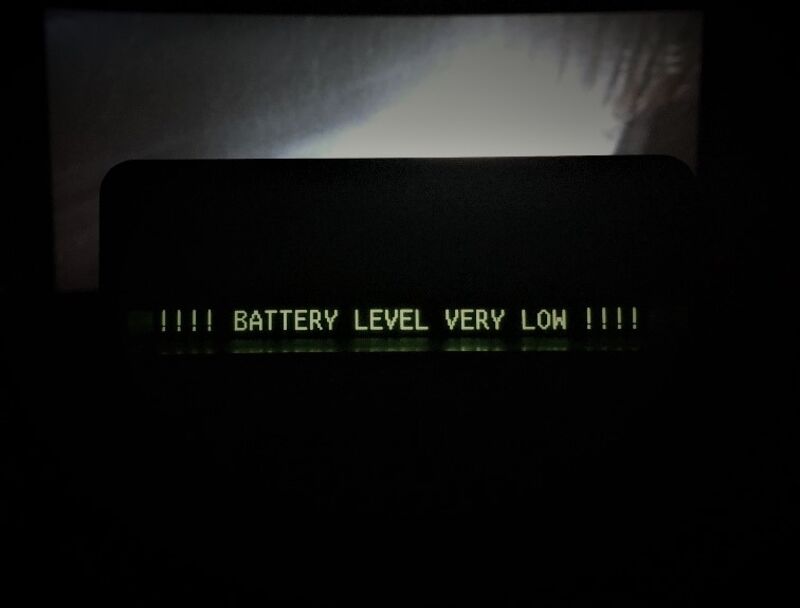
While reviewing a factsheet on Readily Achievable Barrier Removal and Small Businesses I came to think of a recent trip to the cinema with my family to watch Aquaman. The film Aquaman was a visual treat! But. as a Deaf person, my viewing experience was less than equal. I had to request a personal closed captioning device at the cinema. The time needed to request and setup resulted in less than equal access to my enjoyment of the film. Halfway through the film, the battery of my captioning device died. That deprived me from following the dialogue for the rest of the film.
People may think that ‘Readily Achievable Barrier Removal’ refers only to physical barriers. Communication barriers are real and are easy to break down. The definition of “Readily Achievable” under section 36.104 of ADA Title III Regulation is “easy to do without much difficulty or expense.”
Communication barriers are usually "structural in nature." So how do we break down communication barriers at cinemas? The ADA Effective Communication requirement mandates the provision of “auxiliary aids and services.” Auxiliary Aids and services cover methods to ensure equal communication between people. Communication barrier removal at cinemas are often sidestepped by using costly alternatives.
The Department of Justice passed the Nondiscrimination on the Basis of Disability by Public Accommodations - Movie Theaters; Movie Captioning and Audio Description in 2017. This ruling required access to digital movies to be available at cinemas. Cinemas must provide notice to the public about the accessibility of movies. Cinemas must also train their staff to assist patrons with the equipment.
Generally, captioning is the processes of transcribing dialogue to text on the screen. "Closed Captions" allows one the option to view captions. "Open Captions," also known as subtitles, refers to captions that stay open on the screen. Sometimes captions may include descriptions of non-speech elements. Television Decoder Circuitry Act of 1990 ruled that all televisions must have closed caption chips built in.
The ADA prohibits discrimination of, and ensures equal access for, individuals with disabilities. Since the passage of the ADA, we have seen increased accessibility at cinemas through various aids. CaptiView; CCR-100; Rear Window Captioning (RWC); Sony Entertainment Access Glasses deliver closed captions. Fidelio and IRH-280 or IRH-281 Headphone Receiver deliver descriptive narration. Such devices qualify as auxiliary aids under the ADA Title III regulations.
Despite the removal of barriers section within the ADA, which prohibits architectural barriers, removable barriers to communication is not defined. However, remedies to communication barriers are available without much difficulty or expense. And sometimes advances in technology fail to ensure equal accessibility. Some remedies are unpopular with many Deaf and hard-of-hearing patrons. A common and frustrating aspect are the unreliability and discomfort of such devices. Access by mobility disabled individuals to all films is possible through the rotation of films on different screens. Theaters have to provide reasonable notice to the public of the location and time of such accessible showings. Why can’t the same rule also apply to open captioned shows? Today, open movie captioning is available as a digital file without any need for extra equipment. Showing movies with open captions is easily achievable and would not burden cinemas with extra expense. Like for patrons with wheelchairs, multiscreen cinemas could establish a film rotation schedule. That way, all patrons will have the opportunity for shows with open captions for all films.
At present, both Hawaii and Rhode Island have rules for films with open captions. Currently, the District of Columbia is considering a Bill, known as "Open Movie Captioning Requirement Act of 2018." Digital technology allows movie theaters to activate the open captioning file at-will. Captions follow the principle of Universal Design where captions benefit everyone. Captions provide access for Deaf and hard of hearing people. Research shows that there is a benefit to those who are learning English, including children. Many research sources show that captions increase literacy for students everywhere. Captions for Literacy also show that captioning is especially helpful for struggling readers.
If you haven’t, I would suggest that you watch a movie with such "assistive devices” at theaters without sound. I am sure that you will have a different opinion of these devices. You may also come to the conclusion that by offering open captions on all movie shows, we can change the perception that captions benefit everyone, not only the Deaf and hard of hearing.
If you have any questions about open captioning in movie theaters or my work, please don’t hesitate to reach out!